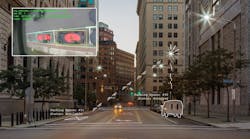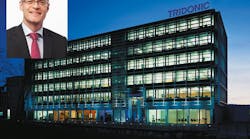Produced by NEMA’s Lighting Systems Division, LSD 11 identifies specific lighting issues, defines correct lighting terminology, and provides straightforward technical guidance applicable to outdoor lighting installations in the US. The publication is intended to be used by anyone dealing with the selection, installation, or management of outdoor lighting systems.
“A number of factors go into the process of selecting the right outdoor lighting for a particular application,” said Joseph Howley of GE Lighting, chair of NEMA’s Lighting Systems Division. “Decision-makers address energy consumption, sky glow, visibility, safety and security, interaction with natural habitats, and other concerns. LSD 11 helps make sense of the many – and sometimes conflicting – guides and regulations on lighting.”
This publication joins around 40 other white papers in the NEMA LSD series, which covers a range of lighting topics.
The publication originates from the NEMA Outdoor Lighting Task Force, which apparently is composed of thirteen manufacturers representing some 90 percent of the lighting market (presumably this is the US market).
The document highlights some of the efforts being made to address outdoor lighting issues. For example, the International Dark-Sky Association (IDA) and the Illuminating Engineering Society (IES) are developing a model lighting ordinance (MLO) to assist municipalities in the adoption of local ordinances to reduce light pollution and promote lighting quality.
The document also states that outdoor lighting codes often try solutions that result in unintended consequences. For example, mandating the use of full-cut-off or fully-shielded luminaires will reduce light emitted directly from the luminaire into the night sky, but can increase sky glow from light reflected off ground surfaces.
Also, pole-height limitations often result in poor lighting uniformity, with dark areas that may compromise safety and security, and brighter areas that cause greater sky glow. The pole-height limitations may also require more poles and luminaires, increasing cost and energy consumption.
Importantly for the solid-state lighting industry, the document points out that lumen-per-watt requirements do not take into consideration the distribution of light, the effectiveness of the light being delivered to the task, or the color temperature of the light source. “Some phosphor-based [LED-based] technologies have higher efficiencies in cooler (bluish-white) color temperatures. Codes with lm/W limits are driving an industry trend to cooler color temperatures without regard to the quality of light for the application,” says the publication.
Effective design techniques
NEMA’s document says that lighting criteria should be defined on the basis of demographics, recognizing for example the different requirements of urban and rural areas. Also, sites should be illuminated to the proper level of light with good uniformity, according to the relevant visual tasks and activity levels. Excessive light wastes energy, contributes to light pollution and may require the eye to adapt to contrasting levels of light. Insufficient light levels and non-uniformity can casus safety and security concerns.
Another design technique is to use optical control to minimize unwanted light, including the use of optics or shields to minimize light above horizontal (i.e. upward), and the use of controls during periods of low activity.

![An installer uses a cell phone to configure a connected lighting system in a Next Generation Lighting Systems (NGLS) living lab. [Photo credit: Image courtesy of Pacific Northwest National Laboratory (PNNL) and NGLS.] An installer uses a cell phone to configure a connected lighting system in a Next Generation Lighting Systems (NGLS) living lab. [Photo credit: Image courtesy of Pacific Northwest National Laboratory (PNNL) and NGLS.]](https://img.ledsmagazine.com/files/base/ebm/leds/image/2020/06/NGLS_Photo_2.5ed693de53fa2.png?auto=format,compress&fit=crop&q=45&h=139&height=139&w=250&width=250)


